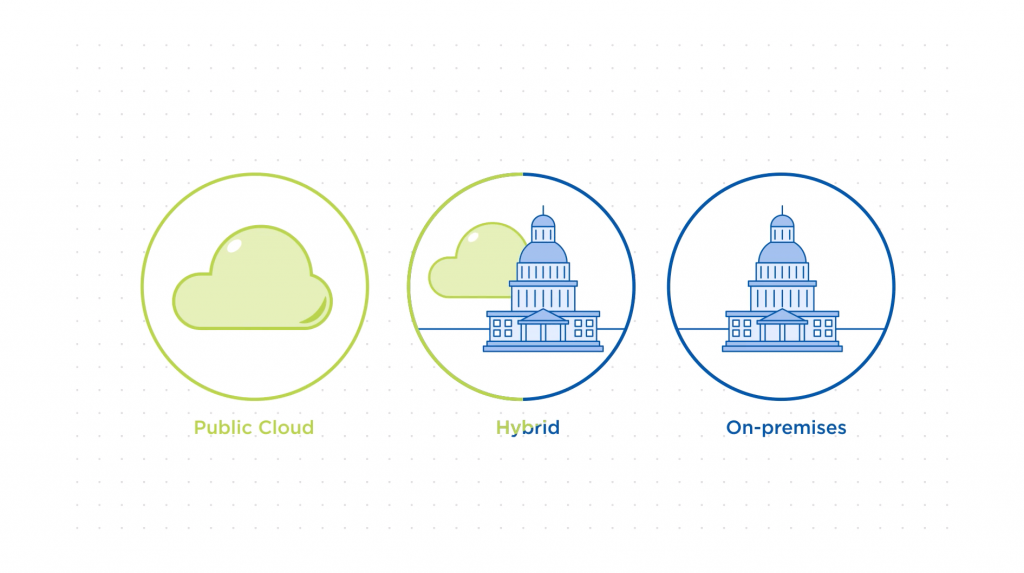The General Services Administration issued the Cloud First policy in December 2010, which encouraged agencies to move some workloads to the cloud. Doing so could help agencies deliver better IT services at a reduced cost, and move IT along the path to modernization.
It seemed like a great idea, but agencies struggled. The cloud was an emerging concept, and there weren’t enough details on how to actually do it. By the spring of 2019, only about 11% of federal IT systems were running in the cloud.
The new strategy is Cloud Smart. Agencies now have more guidance and more experience. They also have much more flexibility in deciding which applications and workloads are best suited to the cloud and which ones should stay on-premises.
Now that agencies are better prepared to embrace a cloud strategy, they need to decide: Public or private cloud. Let’s start with some definitions.
A cloud is essentially a data center, with servers and software accessed over the Internet.
A public cloud is offered by third-party providers, like Google and Amazon, on a subscription basis, available to anyone who signs up. You use what you want when you want and pay as you go.
A private cloud is created only for the entity that pays for it. Many agencies have deployed private clouds within their on-premises data centers.
A public cloud offers simplicity, flexibility and ease of use. It eliminates the need for agencies to invest in server and storage hardware, in addition to a lot of networking equipment. The provider handles all of that and continuously improves it.
That sounds ideal, but a complete public cloud strategy doesn’t always work for agencies. In some cases, they need mission-critical applications and sensitive data to remain completely under their control to meet regulatory compliance. Plus, agencies have run into major difficulties migrating workloads to public clouds. They also fall into vendor lock-in and incur higher costs when usage exceeds the expected norm.
Because of these factors, many agencies still prefer their on-premises data centers. With private clouds, agencies use their existing infrastructure and resources while remaining in control of their data.
Is there a middle road?
Yes: go hybrid. That is, use a mix of public and private cloud solutions to support your needs.
And using a hyperconverged infrastructure (HCI) makes a hybrid approach even easier.
HCI is a software-defined infrastructure, which means everything is virtualized — compute, storage, virtualization and networking resources. It includes software to manage all of the moving parts, requiring less time and effort from IT staff.
True HCI solutions are 100% software-defined, offering a pay-as-you-grow model. Think of HCI as a simple solution for creating a hybrid cloud – one that reduces the complexity of your data center through consolidation.
This article is an excerpt from GovLoop Academy’s recent course, “Building an Enterprise Cloud With HCI,” created in partnership with Nutanix. Access the full course here.


